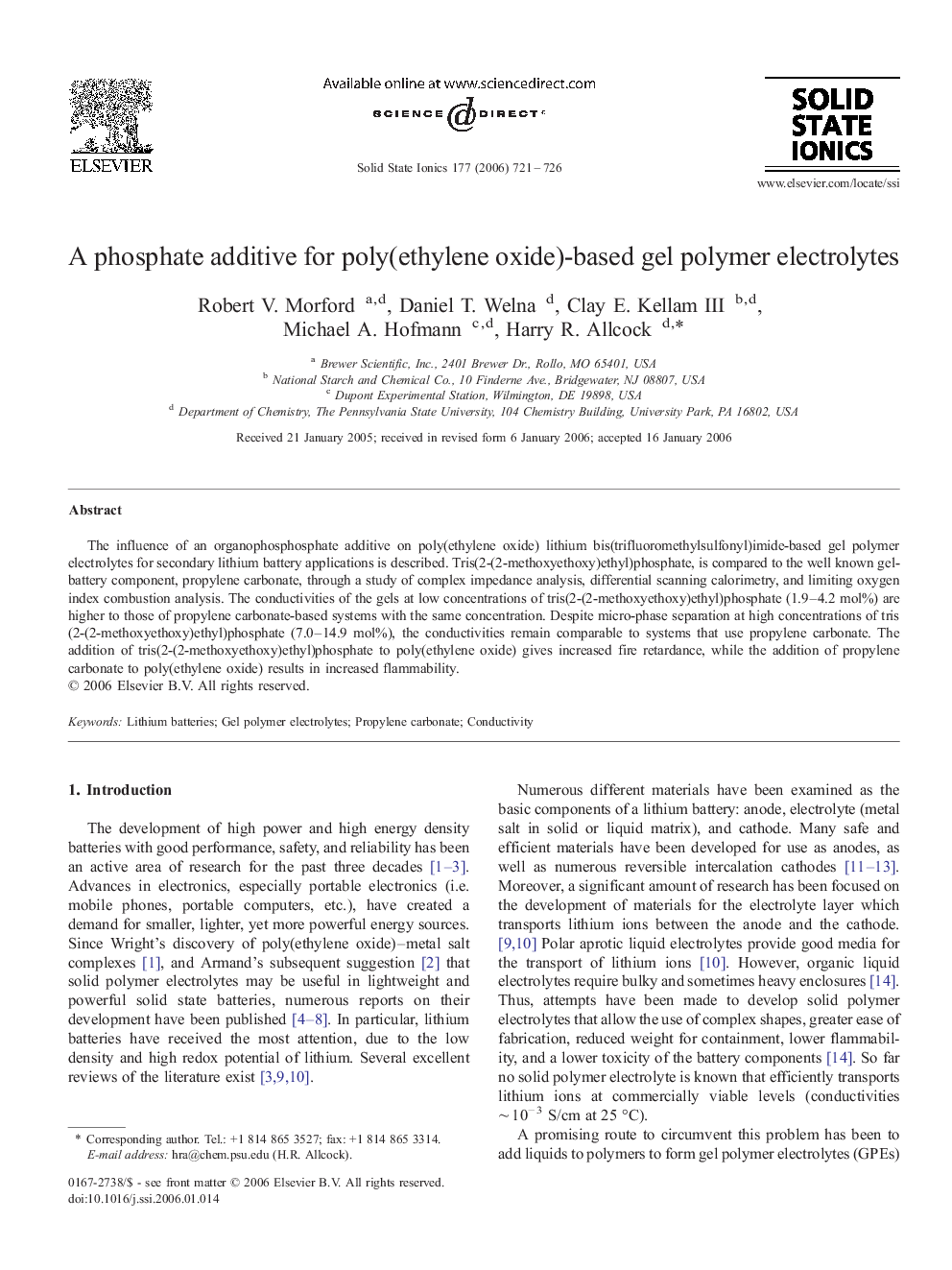| Article ID | Journal | Published Year | Pages | File Type |
|---|---|---|---|---|
| 1298980 | Solid State Ionics | 2006 | 6 Pages |
The influence of an organophosphosphate additive on poly(ethylene oxide) lithium bis(trifluoromethylsulfonyl)imide-based gel polymer electrolytes for secondary lithium battery applications is described. Tris(2-(2-methoxyethoxy)ethyl)phosphate, is compared to the well known gel-battery component, propylene carbonate, through a study of complex impedance analysis, differential scanning calorimetry, and limiting oxygen index combustion analysis. The conductivities of the gels at low concentrations of tris(2-(2-methoxyethoxy)ethyl)phosphate (1.9–4.2 mol%) are higher to those of propylene carbonate-based systems with the same concentration. Despite micro-phase separation at high concentrations of tris(2-(2-methoxyethoxy)ethyl)phosphate (7.0–14.9 mol%), the conductivities remain comparable to systems that use propylene carbonate. The addition of tris(2-(2-methoxyethoxy)ethyl)phosphate to poly(ethylene oxide) gives increased fire retardance, while the addition of propylene carbonate to poly(ethylene oxide) results in increased flammability.
